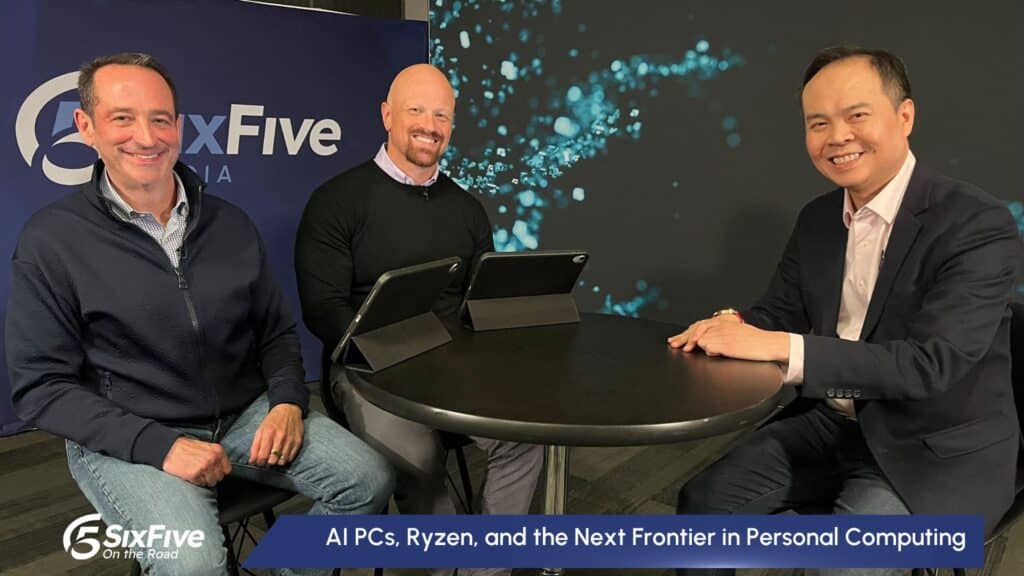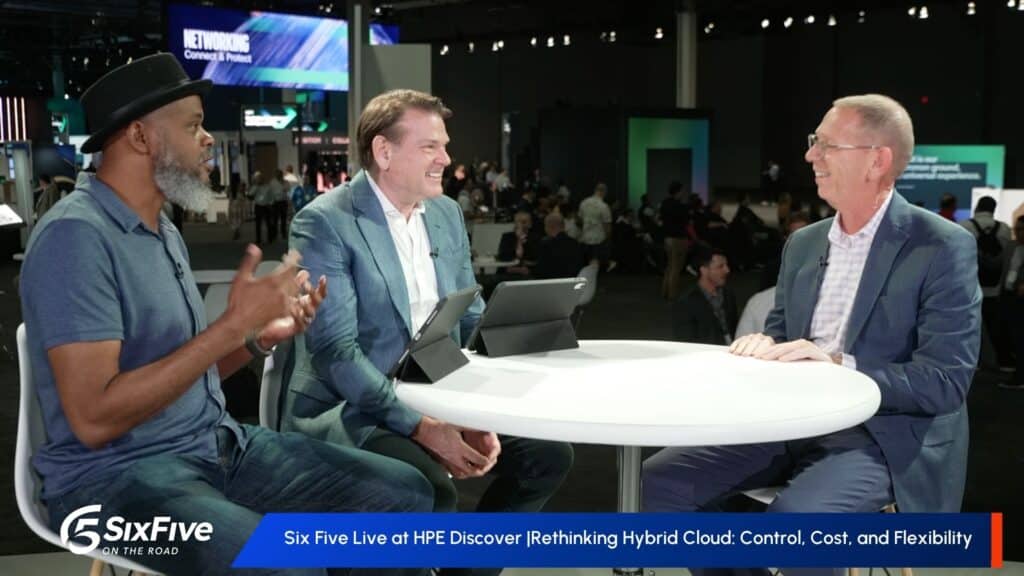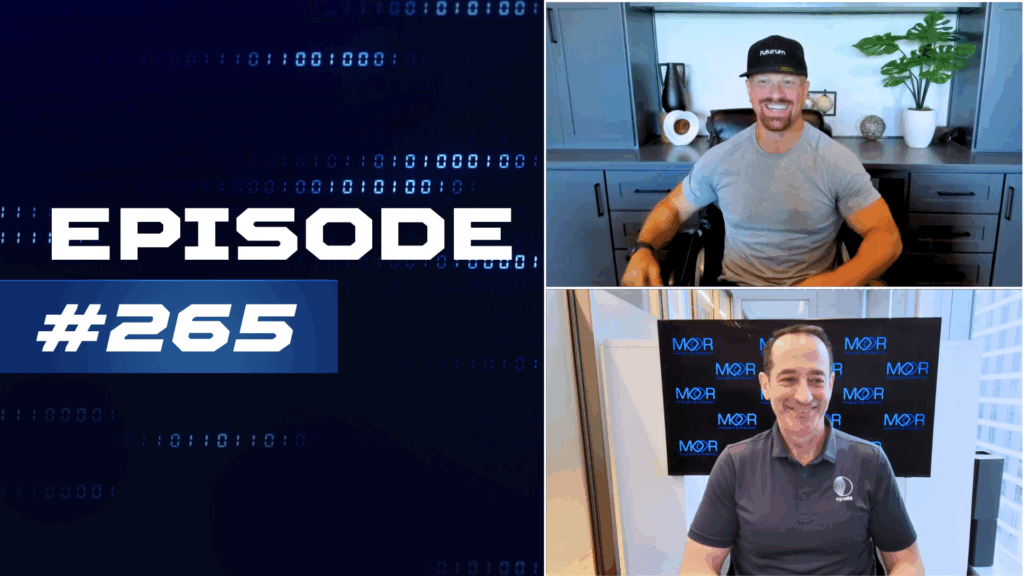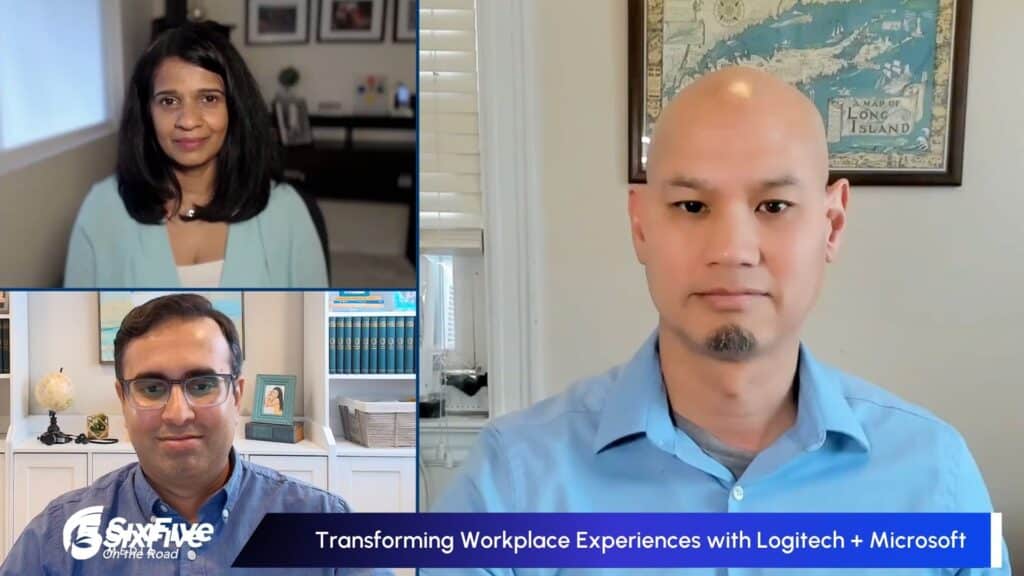The Six Five team discusses Micron Q3 2023 Earnings.
If you are interested in watching the full episode you can check it out here.
Disclaimer: The Six Five Webcast is for information and entertainment purposes only. Over the course of this webcast, we may talk about companies that are publicly traded and we may even reference that fact and their equity share price, but please do not take anything that we say as a recommendation about what you should do with your investment dollars. We are not investment advisors and we ask that you do not treat us as such.
Transcript:
Pat Moorhead: Micron earnings, and I talked about this again twice on CNBC and I would say all in all it was a mixed bag. There was this excitement that the company essentially said in the memory market, the demand trough is over. They said they had increased confidence that the industry passed the bottom for both quarterly revenue and year on year revenue growth that came directly out of the call. They beat on EPS, they met on revenue. Initially after hours the stock went up. And then I think as people kind of peeled it back, people looked in and said, “Okay, so revenue is still off versus last year by over 50%.”
So let me go down the list of the business units. Compute and networking were down 64%, embedded off 36%, mobile off 58% and storage off 53%. There were some really good commentary on AI and the company did a really good job showing how much the order of magnitude memory you need. And oh by the way, higher performance memory. And then if you look at HBM three, which is driving a lot of these accelerators out there, that’s another big adder to AI. China, they gave an update on that pretty much sticking to their talking points that they brought out that we covered it on the prior podcast saying that the worst part impact is a low double digit percentage of worldwide revenue. I’m going to take that as between 10 and 15%, not necessarily hitting in the quarter that was released, but in previous quarters.
So that would affect the outlook on one side in data center, generative AI, they talked about as big, but again, everything else in the server market is blah. In fact, they on the call, their CEO used the word lackluster. So again, kind of mixed. PCs were what you would expect, smartphone, what you would expect. And my final thing I’m going to talk about is risk profile. Investors hate risk. And the story of Micron kind of goes like this. They brought industry leading technologies, DDR5, HBM3 things like CXL, but demand fell off for end product demand. The smartphones, right? The servers, the PCs, and then all of those manufacturers, the Dells, the HPEs, the hyperscalers, they reduced their finished goods and in some instances even returned memory. Okay, this is true for not only Micron, but it’s true for Hynix, it was true for Samsung.
And what happened is that kicked off a price war between folks, right? That’s just now settling down on the memory side. On the call, the company said memory price degradation went down 10%. Think about that. Dan prices going down 10 to 15, 20% a quarter sequentially. It’s tough. And now we have this China risk that I really do appreciate them being very crystal clear on what the worst case scenario is. But listen, I’m a believer in Micron. I think Micron is going to do well. I think the R&D I’m hopeful that it doesn’t cut down to the bone and cut its ability to not only create great technologies and great products, but also you have to market and sell this.
So I’ve seen a lot of companies make a big mistake by cutting all communications off, cutting all marketing spend. And I’m hopeful that the company won’t do that because it will backfire. It’ll hurt them in a year. But I’m also realistic enough to say, “Well the company has negative gross margins right now, Dan.” So you have to make the right cuts. Just make the right cuts, not the wrong cuts. It’s easy as a pundit. But don’t forget, I spent 12 years as an executive at a chip company. I do know how this works.
Daniel Newman: And of course the problem is if you cut too deep, this is a boom and bust industry. So you need to cut deep enough that you try to leave yourself in a good position for the austerity portion of any glut and any downturn. But then again, when it turns you know how hard it is to bring in talent. And then so you have to keep your best talent. You can never cut the PhDs, engineers, scientists, the people that are developing. So then it’s where it tends to really bleed out is the marketing. And then what ends up happening is you make those cuts in the sales marketing and some of the operations areas and then when the market turns you’re chasing your tail. So the companies that can squirrel their nuts during the uptime and know that you’re kind of averaging out over time tend to do a little bit better.
Pat, basically their EBITDA, or let’s just call it NOI was like 50% of their revenue in losses. So they had 3.8 billion in revenue or whatever that was. And they had 1.9 billion in losses. It cost them 6 billion to do 4 billion. I mean that’s a pretty remarkable result. And not to the good, just being really candid. Now, I’m not saying Micron doesn’t have a great opportunity around ai. I actually believe they do. I believe they have some great innovations, 232 layer man. Some of the things that they’re doing very, very proactive for data center and are going to make them a very compelling partner to many of these new future AI data centers that will all require more memory capabilities. But the business performance pa, look, I get it that you did better than you predicted, but the prediction was bad and the result was bad.
Given the current market, losing $2 billion in a quarter is hard to swallow in any circumstance. But like I said, if the company was communicating well, what they really have done is they had some great quarters during that boom run up and they made a lot of money. And this is the burn to try to keep the company in a good position to be able to capitalize on that next wave. And that’s kind of the subplot of what I heard. It’s kind of they believe the trough worst of the trough is here and now we’re going to start seeing the company rise out of that trough. I mean clearly memory is not benefiting or accelerating at a rate anywhere close to the GPU space. Their guidance wasn’t even up. It was really just in line. The result was 1 hundred million above expectations.
But when you’re in multiple billions, that doesn’t necessarily look at look to people like a holy crap moment. It’s like, “Okay, it’s good. It was good, it was better than we thought. Good.” And so the real question you have to ask about Micron is do they have the technology and the innovation? I believe so. Is China going to be a huge negating factor for the company? If these sanctions are held up, it’s going to make a difference. But is if these US chip makers continue to see the acceleration, they will likely be able to offset that same as Nvidia. By the way, Nvidia is offsetting it because the demand is so small here in the us, they can deal with it. So I think Sanjay Mehrotra came out and said the right things. I think he’s in the right place. I think the losses are just, they are what they are and it’s hard to look at them and not be like, “Ugh.”
But the company, if it can turn the corner, if it’s played its cards right, if it’s built the infrastructure out memory will scale in parallel at a fairly good clip. And then of course Pat, as demand rises in this business, prices rise, demand and price or closely tied, that means margins rise. That means profit rises and we get out of these discounting wars. And by the way, they also can get out of this by continuing to out-innovate, meaning their technology does something the others doesn’t. And so when it’s all things equal, this industry is incredibly cutthroat.
Pat Moorhead: We could see 100 point swing when there’s not enough memory and then everybody gets mad at the memory suppliers and the storage suppliers when they double their prices. But it’s like, look at this negative gross margins folks. So been covering this for 30 years and there has always been a reaction, there’s always been a memory oversupply and a memory undersupply. It’s like there’s never the right amount, it’s weird. There is no three bears scenario with memory.
Author Information
Daniel is the CEO of The Futurum Group. Living his life at the intersection of people and technology, Daniel works with the world’s largest technology brands exploring Digital Transformation and how it is influencing the enterprise.
From the leading edge of AI to global technology policy, Daniel makes the connections between business, people and tech that are required for companies to benefit most from their technology investments. Daniel is a top 5 globally ranked industry analyst and his ideas are regularly cited or shared in television appearances by CNBC, Bloomberg, Wall Street Journal and hundreds of other sites around the world.
A 7x Best-Selling Author including his most recent book “Human/Machine.” Daniel is also a Forbes and MarketWatch (Dow Jones) contributor.
An MBA and Former Graduate Adjunct Faculty, Daniel is an Austin Texas transplant after 40 years in Chicago. His speaking takes him around the world each year as he shares his vision of the role technology will play in our future.





